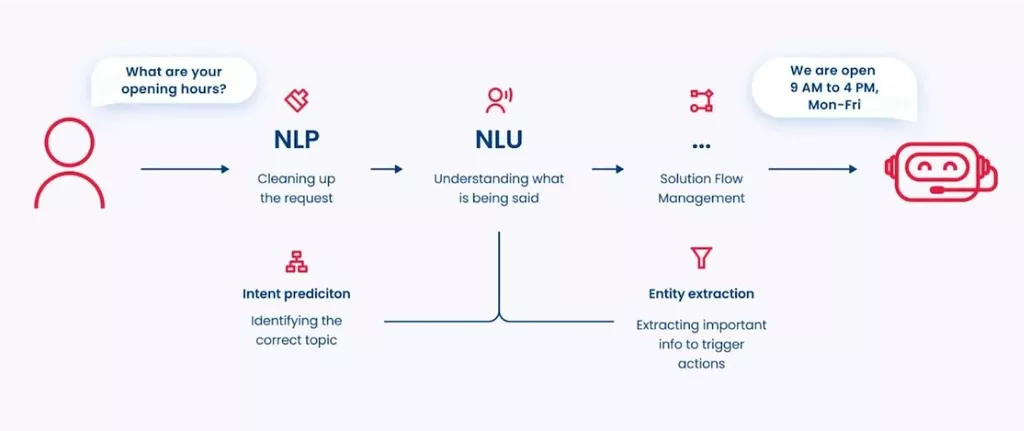7 Phases of the System Development Life Cycle
Getting early feedback from an end user enables the elimination of issues and bugs in the early stages of software creation. Now that you know the basic SDLC phases and why each of them is important, it’s time to dive into the core methodologies of the system development life cycle. There are various approaches to testing, and you will likely adopt a mix of methods during this phase. Behavior-driven development, which uses testing outcomes based on plain language to include non-developers in the process, has become increasingly popular. The spiral model emphasizes the need to go back and reiterate earlier stages a number of times as the project progresses. It’s actually a series of short waterfall cycles, each producing an early prototype representing a part of the entire project.

Developers use the methodology as they design and write modern software for computers, cloud deployment, mobile phones, video games, and more. Adhering to the SDLC methodology helps to optimize the final outcome. Various SDLC methodologies have been developed to guide the processes involved, including the original SDLC method, the Waterfall model.
Where is SDLC Used?
The Agile SDLC model separates the product into cycles and delivers a working product very quickly. Testing of each release feeds back info that’s incorporated into the next version. According to Robert Half, the drawback of this model is that the heavy emphasis on customer interaction can lead the project in the wrong direction in some cases.

Most importantly, the first three steps seek to generate answers to questions and the last three steps are optimized to provide outputs. Another idea is that you could test solutions on the market to better understand the pitfalls of existing software. Perhaps you would engage in a conversation with managers who lead hourly worker teams. Requirements are collected and the overall objective is identified during this phase.
What is a system development life cycle security testing provider?
The number of steps in an SDLC will vary depending on the business and its software product goals. For example, at the most basic level, software is designed, developed, tested and then released. Typically, there will be between five and seven steps—although there can be more. Testing is critical to the system development life cycle to ensure compliance with functional, performance, and security requirements. Ideally, testing should happen at every stage of the SDLC to address issues early when they are fastest and most cost effective to fix.
- These baseline assists the project manager in monitoring performance.
- It consists of steps as follows- Plan, Analyze, Design, Develop, Implement and Maintain.
- Use Smartsheet’s SDLC with Gantt template to get started quickly, and help manage the planning, development, testing, and deployment stages of system development.
- A configuration management system shall be implemented during development and implementation.
- Security is critical – especially when the purpose of the system development life cycle is to create software.
- In addition, the team monitors overall system performance, security, and user experience to identify new ways to improve the existing software.
In fact, many project managers use SDLC as a guide for managing their projects. Project managers use tools like Gantt charts and task lists to track milestones and deadlines. They also work with developers to ensure that projects are on track and within budget. Both Microsoft and Netscape managed millions of lines of code as specifications changed and evolved over time. Design reviews and strategy sessions were frequent, and everything was documented.
V-Shaped Model
With the support of SDLC, a business can swiftly create high-quality, thoroughly tested, and production-ready software. If you want to improve the quality of your software products, using OpenText ValueEdge is the first step. Fortify offers the most comprehensive static code analysis and dynamic application security testing technologies backed by industry-leading security research. Fortify offers a complete toolset of application security solutions to shift security left in your SDLC. By design, Fortify and other OpenText tools bridge the gap between existing and emerging technologies—which means you can innovate faster, with less risk, in the race to digital transformation.
ALM includes the entire lifecycle of the application and continues beyond SDLC. The document sets expectations and defines common goals that aid in project planning. The team estimates costs, creates a schedule, and has a detailed plan to achieve their goals.
Stage 4: Develop the code.
It can also include adding new features or functionality to a current product. Operations refer to the day-to-day running of a software product or service, such as performing backups and other administrative tasks. Other steps which may appear include project initiation, functional specifications, detailed specifications, evaluation, end-of-life and other steps that can be created by splitting previous steps apart further. The System Development Life Cycle encompasses a series of interconnected stages that ensure a systematic approach to system development.
The SDLC phases or stages can be used in various ways with multiple sequences. Organizing and reorganizing the steps of the SDLC will produce so-called models or methodologies. Most solution providers use the waterfall life cycle approach for software solution development. The waterfall approach (refer Figure 14.3) helps to understand the extent of the residual risks and allows one to work conscientiously toward reducing those risks.
Software Reliability
Conceptually, the design flows from one phase down to the next, like that of a waterfall. It’s also important to know that there is a strong focus on the testing phase. As the SDLC is a repetitive methodology, you have to ensure code quality at every cycle. Many organizations tend to spend few efforts on testing while a stronger focus on testing can save them a lot of rework, time, and money. As you take your first steps into a software development career, consider potential employers and particular areas of interest.
The developers should thoroughly follow this document and also should be reviewed by the customer for future reference. Continues improvement and fixing of the system is essential, Airbrake provides robust bug capturing in your application. In doing so, it notifies you with bugs instantly, allows you to easily review them, tie the bug to an individual piece of code, and trace the cause back to recent changes. Testing can be performed by real users, or by a team of specialized personnel, it can also be systematic and automated to ensure that the actual outcomes are compared and equal to the predicted and desired outcomes. Mostly used for creating and delivering a wide range of ideas, this model perfectly fits the clients who don’t have a clear idea or vision of what their final product should look like. It enables regular incorporation of feedback, which significantly reduces the time and costs required to implement changes.
How does SDLC address security?
For example, requirements may be gathered, tracked and managed in one solution while testing use cases may take place in a completely different solution. In today’s technology world, the Agile software development life cycle is one of the most popular and widely used models for creating high-quality software solutions. This model is designed to be flexible and responsive to customer needs, allowing teams to adapt their plans as user requirements what is the system development life cycle change quickly. It also has several advantages over traditional approaches like Waterfall or Spiral development. Software development can be challenging to manage due to changing requirements, technology upgrades, and cross-functional collaboration. The software development lifecycle (SDLC) methodology provides a systematic management framework with specific deliverables at every stage of the software development process.
